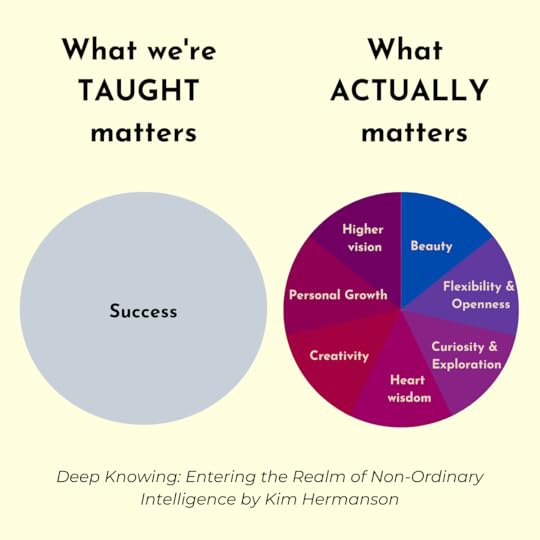Kim Hermanson's Blog, page 12
November 16, 2022
The teacher is a point of access to something beyond the teacher.
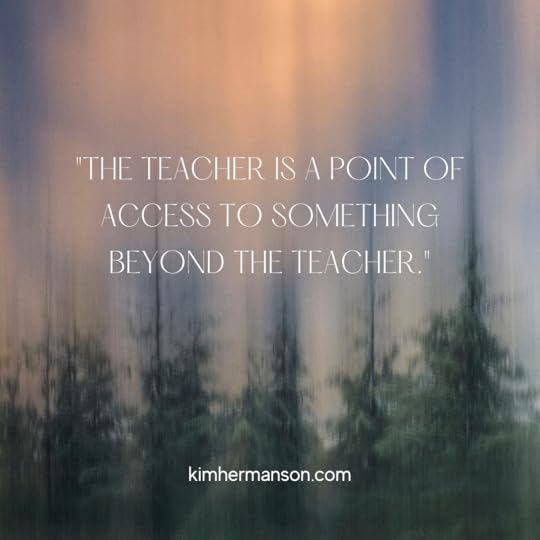
For most teachers who love their work, it’s more than a job. It’s a creative outlet, an opportunity to share what you love, and an opportunity to grow.
That’s the way it’s been for me, anyway.
Burnout is common in the helping professions, but when I approach teaching as a cauldron for my own growth, I stay renewed and inspired.
When I teach, there’s a “third thing” present that’s bigger than me. I’m being held and led by Something greater.
The “third thing” is doing the teaching.
The philosopher Peter Kingsley wrote, “The teacher is a point of access to something beyond the teacher.”
When the weight of the situation is all on our shoulders—when we feel we must be perfect, have all the answers, and be “in control”–it’s exhausting.
And terrifying.
But when we find and access the “third thing”–the place of mystery–we have fresh space to breathe into. We can be present in a whole new way.
Being a teacher in the traditional sense presents an uncomfortable polarity. On one side is the teacher who’s expected to be in charge. And on the other, are students who’ve come as empty vessels, waiting to be filled.
This polarity of naturally brings tension…and pressure. And annoyance from students.
But when we honor the “third thing,” we bridge the dichotomy between teacher and student. Beauty, grace, and inspiration are present in the room. We get to participate in mystery.
Somewhere in the Bible is the phrase “two or more are present, there I am in your midst.” I don’t consider myself to be a religious person, but I’ve always taught with this in mind. There is a third thing that is present when I teach and that third thing brings beauty.
November 9, 2022
Don’t search for a solution. Open space for it.
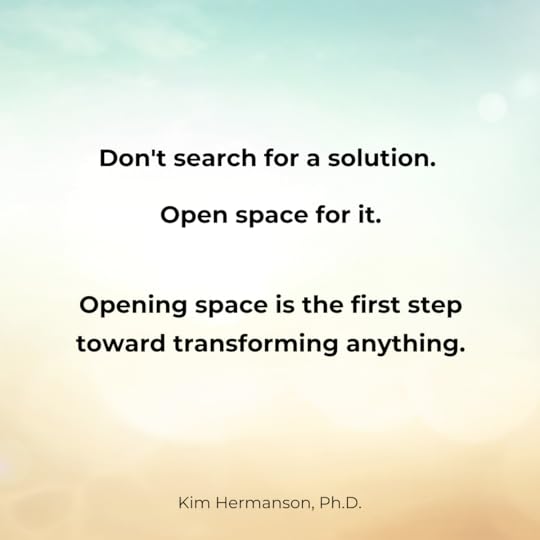
The educator Maxine Green once said: “I find that, when a space is provided, something rather wonderful can happen.”
Empty space allows things to evolve in an organic way. It creates room for what we DON’T know and can’t expect. Empty space allows Something greater to come through us.
So next time you’re stuck, don’t search for a solution.
Instead, open space for it.
Creating space is the first step toward transforming anything.
November 2, 2022
It’s medically proven that our brains make stuff up. Maybe trust the heart?
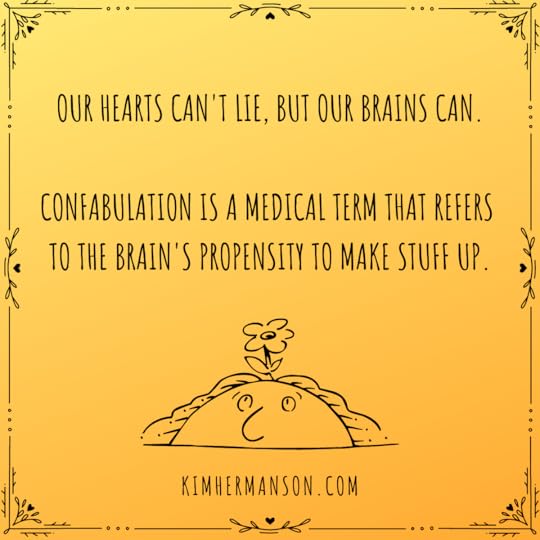
Our brains make stuff up.
Confabulation is a medical term that refers to “the production or creation of false or erroneous memories without the intent to deceive.” (You could call it “honest lying.”)
In other words, we humans can share false stories, genuinely believing they are true.
from Confabulation: A Guide for Mental Health Professionals by Jerrod Brown, et al in ClinMed International Library, Volume 4, Issue 2:
“These false memories may consist of exaggerations of actual events, inserting memories of one event into another time or place, recalling an older memory but believing it took place more recently, filling in gaps in memory, or the creation of a new memory of an event that never occurred. While some confabulated memories are easier to identify as false, in other cases, the confabulated memory may be so personal and unique, only a corroborating witness like a family member or close friend may be able to confirm the veracity of the memory. Confabulation also occurs when an individual unintentionally mistakes imagined events as actual memories.”
Somehow in today’s crazy world, this seems important to know.
October 26, 2022
October 19, 2022
Teaching is an artistic activity.
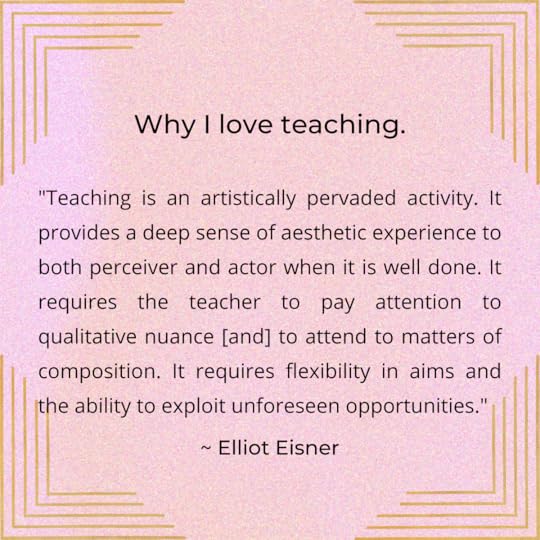
I’ve always loved teaching– I find it to be mysterious, creative, and beautiful. Elliot Eisner (eloquently) puts words to my own experience:
“Teaching is an activity whose [best] efforts result in what the fine arts are intended to provide: a heightened consciousness and aesthetic experience. “
“Teaching is an artistically pervaded activity. It provides a deep sense of aesthetic experience to both perceiver and actor when it is well done. It requires the teacher to pay attention to qualitative nuance [and] to attend to matters of composition. It requires flexibility in aims and the ability to exploit unforeseen opportunities.”
When we teach, we meet life. My love for teaching grew as I realized that at my best, I was a LEARNER with my students. In fact, I was a better teacher when I held that position.
I believe teaching is a sacred calling. Peter Kingsley said, “The teacher is a point of access to something beyond the teacher.”
~ Elliot Wayne Eisner (1933-2014) was a professor of Art and Education at the Stanford Graduate School of Education, and was one of the United States’ leading academic minds.
October 5, 2022
5 ways to navigate uncertainty and learning
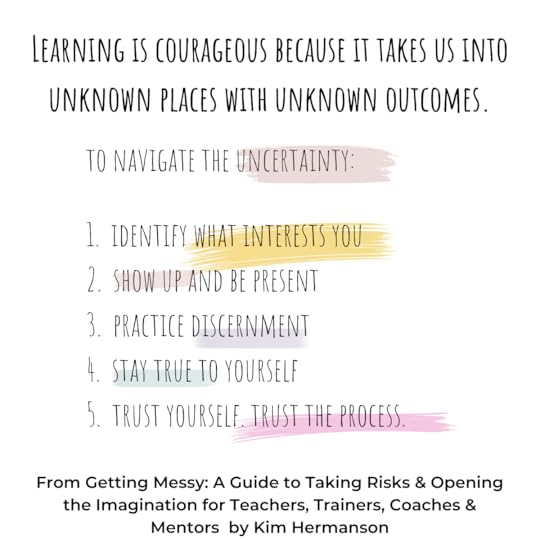
We learn when we connect with something in a way that holds meaning for us, we learn.
Here’s how to navigate the uncertainty.
1. identify what interests you
2. show up and be present
3. practice discernment
4. stay true to yourself
5. trust yourself. trust the process.
Learning is courageous because it takes us into unknown places with unknown outcomes.
Excerpted from Getting Messy: A Guide to Taking Risks and Opening the Imagination for Teachers, Trainers, Coaches, and Mentors
October 3, 2022
Check out my new article in The Psychologist: What’s Your Metaphor?
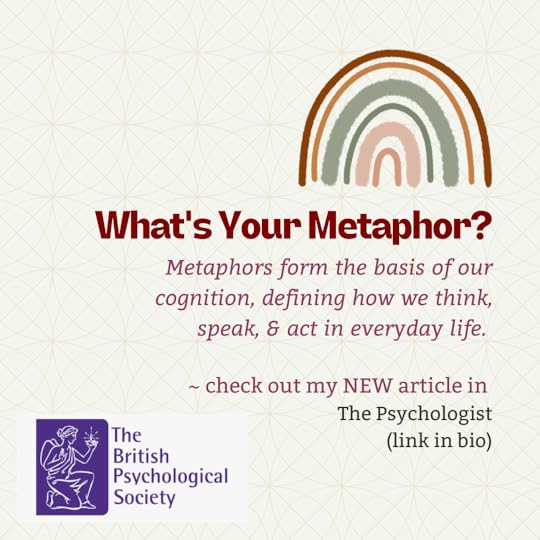 An excerpt from my book, Deep Knowing, published in The Psychologist:
An excerpt from my book, Deep Knowing, published in The Psychologist:
“The ability to comprehend our experience through metaphor can be thought of as a sense like seeing, touching, or hearing. Metaphor is connected with intuition. For example, someone might walk away from a conversation and say, “I can’t put my finger on it, but something feels off.” Or visit a friend’s new home and describe it as ‘heavy’ or ‘light’ or ‘cheerful’.”
“At any given time, we might say we’re feeling ‘light’ or ‘heavy’, ‘scattered’, ‘crystal clear’, or ‘in over our head’. We might say we feel overwhelmed, like we’re drowning, or ‘on top of the world’. We might say, ‘I’ve closed that door but don’t see the next one yet’, ‘I feel like I’m swimming upstream’, ‘I need a time out’, or ‘She’s looking through rose-tinted glasses’.”
Clients often come to therapy because of negative associations and patterns (negative metaphors). Once you have uncovered the negative metaphoric image, you could simply ask the client: ‘If you could change this image, how would you change it?’ But in my own work, I find it helpful to go deeper… into a client’s innate positive (rather than negative) metaphoric associations.
Our personal mythic reality–our own metaphoric structure of individual reality–is revealed in our early memory metaphors. We each hold early metaphoric images that go on to shape the way we see the world. These images come from happy memories–things, situations, places, or people–that we cherished and became imprinted on our hearts when we were children. These images are often associated with the natural world.
September 28, 2022
Questions that inspire critical thinking
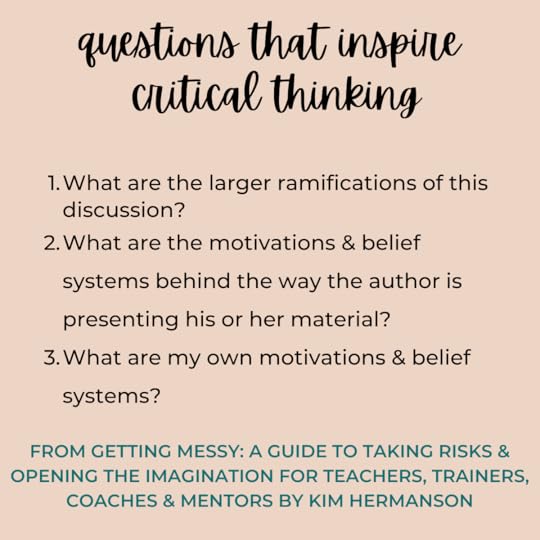
CRITICAL THINKING is often confused with finding things to disagree with. Perhaps the word “critical” is what gets in our way.
Actually, critical thinking is more about depth: critical thinkers look under issues and state truths that haven’t been spoken:
What are the larger ramifications of this discussion?What are the motivations and belief systems that underlie the author or speaker’s opinions and the way he (or she) frames and discusses issues?What are the motivations and belief systems that underlie my own opinions? Through what lens am I viewing the world?If I’m having a strong reaction, such as anger or frustration, to a particular book, set of ideas, or person, why might I be having this reaction? What “truth” is under- neath my emotional reaction?What two or three main ideas do I get out of this piece of writing, lecture, or conversation? What ideas here stimulate and inspire me?Do I feel comfortable in this learning situation? Why or why not? Am I gaining something from this experience?Is this conversation making me feel invigorated or energized? Or is it making me feel sluggish? Why might this be?Critical thinking is the ability to look under the surface of what is being said and discussed. It involves examining our own lenses and perspectives through which we’re thinking and responding.
It’s about looking deeper.
Excerpted from Getting Messy: A Guide to Taking Risks and Opening the Imagination.
September 24, 2022
Lessons on creativity from ‘Top Chef’
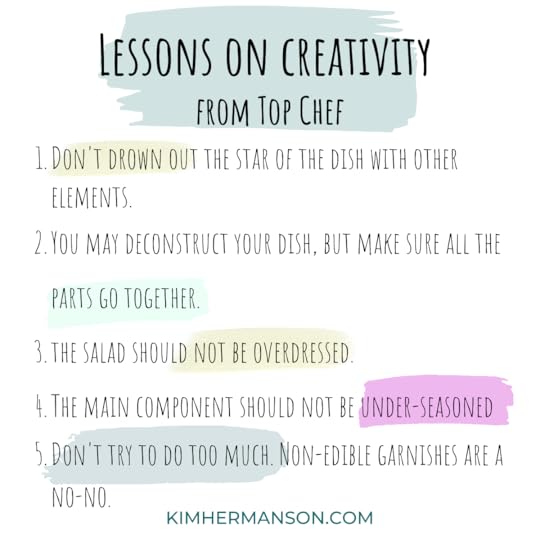
Cooking is my favorite metaphor for the creative process. The creative is JUICY. When we work on a creative project, we STIR things, QUICKEN the energies, and let ideas SIMMER and COOK. We also need a STRONG POT.
On that note, here are 12 important tips for a winning ‘dish’ from the reality tv show Top Chef. Hope they’re helpful!
1. Let the star of the dish be the star of the dish. Drowning out the star of the dish with other elements is a no-no.
2. Sometimes the dish needs a “hit of acid.”
3. You may deconstruct your dish, but make sure all the parts go together.
4. Your dish should not be “one note.” Similarly, don’t have everything be in the same “flavor profile.” Offer multiple layers and depth of flavor.
5. One should be able to taste every individual flavor separately. Don’t let the flavors blend together.
6. Your goal is to make a ‘composed dish’ but if you fail on execution, you will be sent home.
7. The judges are looking for “complex” dishes that are ‘well balanced’ between savory and sweet.
8. However, don’t try to do too much. Non-edible garnishes are a no-no.
9. Presenting one main element that’s perfectly cooked “shows a lot of confidence.”
10. The salad should not be overdressed.
11. The main component not underseasoned.
12. And never, never do something we’ve seen before.
September 14, 2022
5 reasons why creativity and business have a problematic relationship – article in Medium
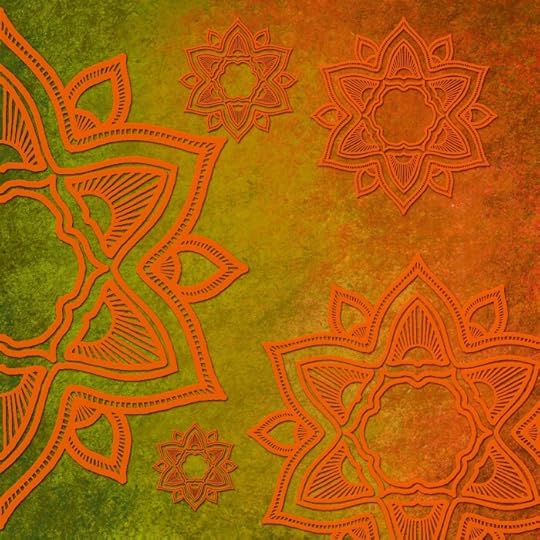
Some highlights from my article in Medium, Five Reasons why Creativity and Business have a Problematic Relationship…
“Creativity lives in the unknown…in a fairy-tale place that’s beyond how we are currently “looking.” True creativity is confronting, confusing, unacceptable, and childlike. And nearly impossible to measure, contain or define.”
“Both Carl Jung and Albert Einstein said in different ways that problems can’t be solved at their own level. To come up with truly innovative solutions, to sincerely dwell in the creative, we have to shift our focus. We have to look in a different way.”
Here are 5 reasons why creativity and business can be incompatible:
(1) Creativity is about expansiveness, unlimited possibilities, and being comfortable with the unknown.
(2) True creativity is challenging, confronting, and rarely ‘acceptable.’
(3) Creativity is confusing and not readily explainable.
(4) Creativity is not separate from who are as humans — it’s not a “tool.”
(5) Highly creative people are comfortable with childlike play.
Read the full article here:

